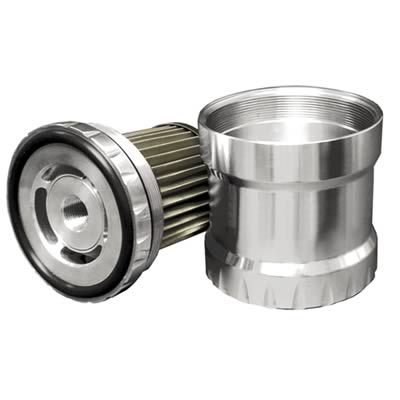Toobuilder
Well Known Member
After reading several threads on the applicability of the various "automotive" filters to our aircraft, I was drawn to this product in my most recent Summit Racing catalog:

Looks like the same kind of filter media I'm used to working with in turbine engines. Disassembly and cleaning would sure be easier than cutting/unfolding/ inspecting/disposal of the conventional filters. With this thing you just wash it out in some clean solvent and inspect the debris left behind.
Apparently, the product offered by Summit is an "offshore" product, but there is also an American offering: http://www.kandpengineering.com/technicalhighlights.shtml
I like the fact that you can get consistent micron filtering across the media, unlike paper, which is rated as an "average". As it turns out, a paper filter advertised as "10 microns" will let chunks as large as 50 microns pass. With a stainless screen, the aperture size is consistent.
Any thoughts?

Looks like the same kind of filter media I'm used to working with in turbine engines. Disassembly and cleaning would sure be easier than cutting/unfolding/ inspecting/disposal of the conventional filters. With this thing you just wash it out in some clean solvent and inspect the debris left behind.
Apparently, the product offered by Summit is an "offshore" product, but there is also an American offering: http://www.kandpengineering.com/technicalhighlights.shtml
I like the fact that you can get consistent micron filtering across the media, unlike paper, which is rated as an "average". As it turns out, a paper filter advertised as "10 microns" will let chunks as large as 50 microns pass. With a stainless screen, the aperture size is consistent.
Any thoughts?




